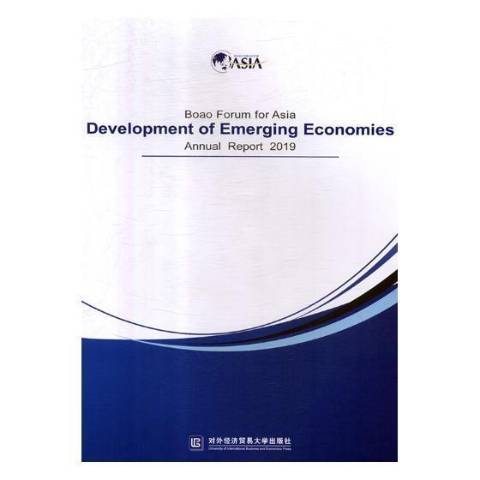內容簡介
The Boao Forum for Asia, a non-governmental and non-profit international organization with a fixed conference date and a fixed domicile, has become an important and high-profile platform for dialogues on Asian and global issues for government, industrial and commercial as wE11 as academic leaders in Asia and other continents. It aims to promote economic exchanges, coordination and cooperation among countries within Asia and between Asia and other continents. To expand the external exchange channels of the Asian economies and establish wider cross-regional links, the forum is committed to pushing development of, and cooperation among the world's emerging-market countries. The forum has started to organize the compilation of the annual development report for the emerging-market economies since 2010,
In 2010, the forum for the first time defined the term "E11" (11 major emerging-market economies) in its annual development report. The 2019 report continues to focus on study of the E11 and, in particular, analyzes their new developments in economic growth, employment and income, price and monetary policy, international trade, international direct investment, international commodities, and debt and financial markets. It also anticipates the economic situations of the E11 in 2019.
Against the backdrop of global economic slowdown, the emerging economies saw a little slower economic growth in 2018. In the year, the E11 registered a GDP growth rate of about 5.1%, 0.1 percentage point lower than that of 201 7, but stil! maintained a relatively high growth rate compared with other emerging-market and developing economies, and its growth rate was 1.4 percentage points higher than that of the world economy. As the largest emerging economy, China saw a slower economic growth pace in 2018 than 2017, but its economic growth still exceeded its set target of 6.6%, making China a major contributor to global growth. India maintained a higher growth rate over 2017 in 2018, while Argentina suffered an economic recession. Over 2018, the employment situations in the emerging economies have improved, incomes has shown signs of improvement, trade growth has gained momentum, and foreign direct investment has grown against adverse conditions. However, their inflationary pressures have also increased and debt levels generally risen, accompanied by intensified financial market volatility.
At the same time, economic cooperation among the emerging economies themselves has also shown a positive trend. From an internal cooperation perspective, the proportion of internal trade in the E11's total foreign trade continued to rise in 2018, and the direct investment cooperation among them also continuouslydepened. In terms of external cooperation, the E11's economic and trade ties with the developed economies weakened, while the share of trade with the emerging-market and developing economies hit a record high. In addition, in the context of escalating unilateral and protectionist policies from the United States and other major developed economies, the E11's trade and investment activities with the developed economies are facing increasing obstacles.
圖書目錄
Preface
Chapter 1 Overview
1.1 Situation Analysis in 2018
1.2 Prospects for 2019
Chapter 2 Economic Growth
2.1 Economic Growth Eases Slightly
2.2 Consumption and Net Export Boost Growth
2.3 Trend of Mid- and High-Rate Growth may Continue
Chapter 3 Employment and lncome
3.1 EmploymentSituationsImproving
3.2 Per Capita Income Showing A Rising Momentum
Chapter 4 Prices and Monetary Policy
4.1 Sustained Inflationary Pressure
4.2 Overall MonetaryTightness to Fall
Chapter 5 InternationaITrade
5.1 Trade Recovery Gaining Momentum
5.2 Threat of Protectionism Increasing
5.3 New Changes in Trade Links
Chapter 6 International Directlnvestment
6.1 Growing Attractiveness to FDI
6.2 Investment Liberalization and Facilitation Continuously Advanang
Chapter 7 Bulk Commodities
7.1 A Marked Rise in Energy Commodity Prices
7.2 Differentiated Price Rises or Falls of Metal Commodities
7.3 "Price rise or fall" of Precious Metal Commodities
7.4 Overall Price Rises of Fertilizer Commodities
7.5 Agricultural Commodity Prices Almost Unchanged
7.6 International Commodity Prices and Ell Economies
Chapter 8 Debt
8.1 Public Debt Risks Still Controllable
8.2 Rising Private Debt Risks
8.3 Weakening of Foreign Debt Risks
Chapter 9 Financial Market
9.1 Stock Markets of Some Ell Countries Slump
9.2 Increasing Pressure on Treasury Bond Market
9.3 Real Estate Market Continues to Differentiate
9.4 Increasing Currency Depreciation Pressure
9.5 Financial Market Outlook
References
Acknowledgements

